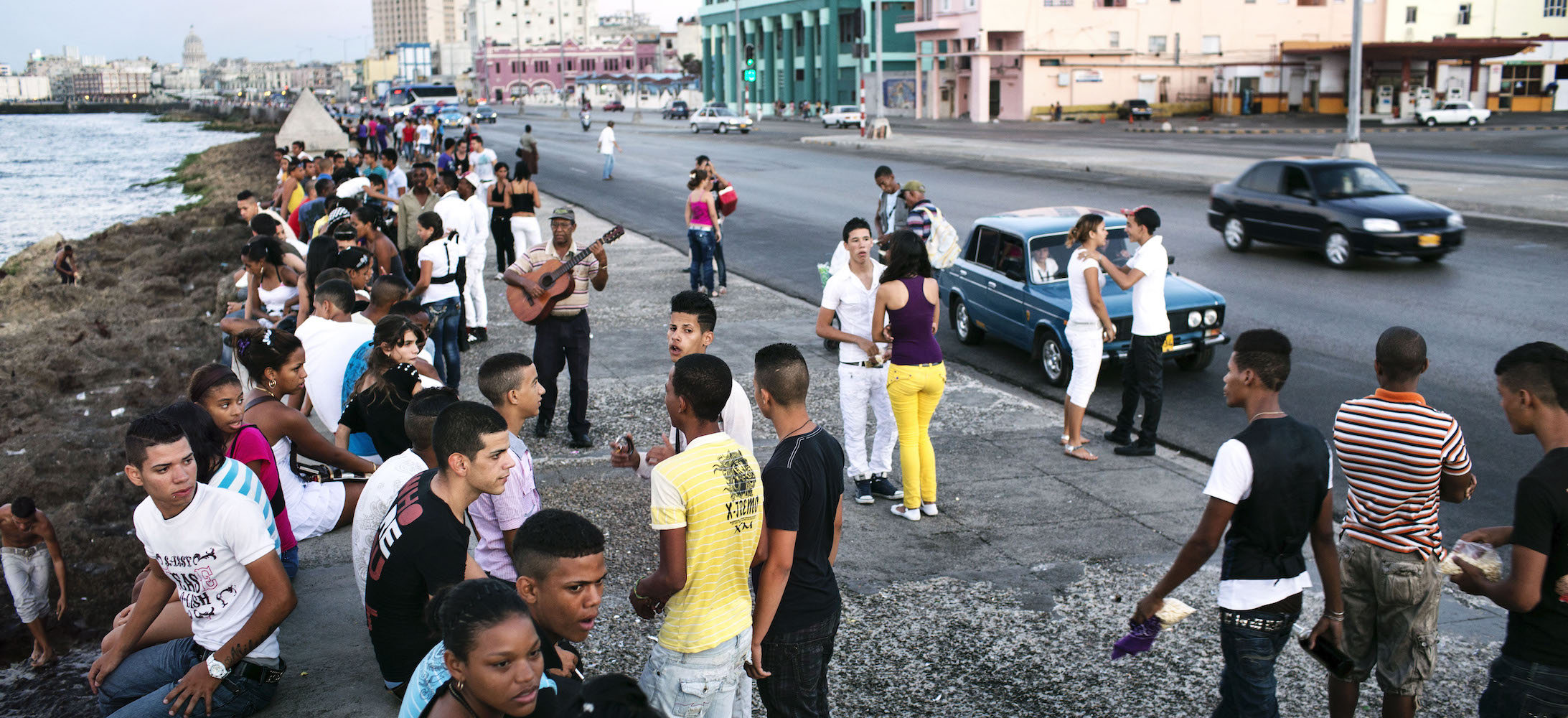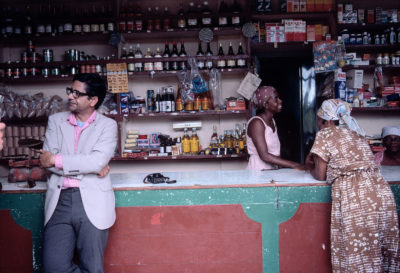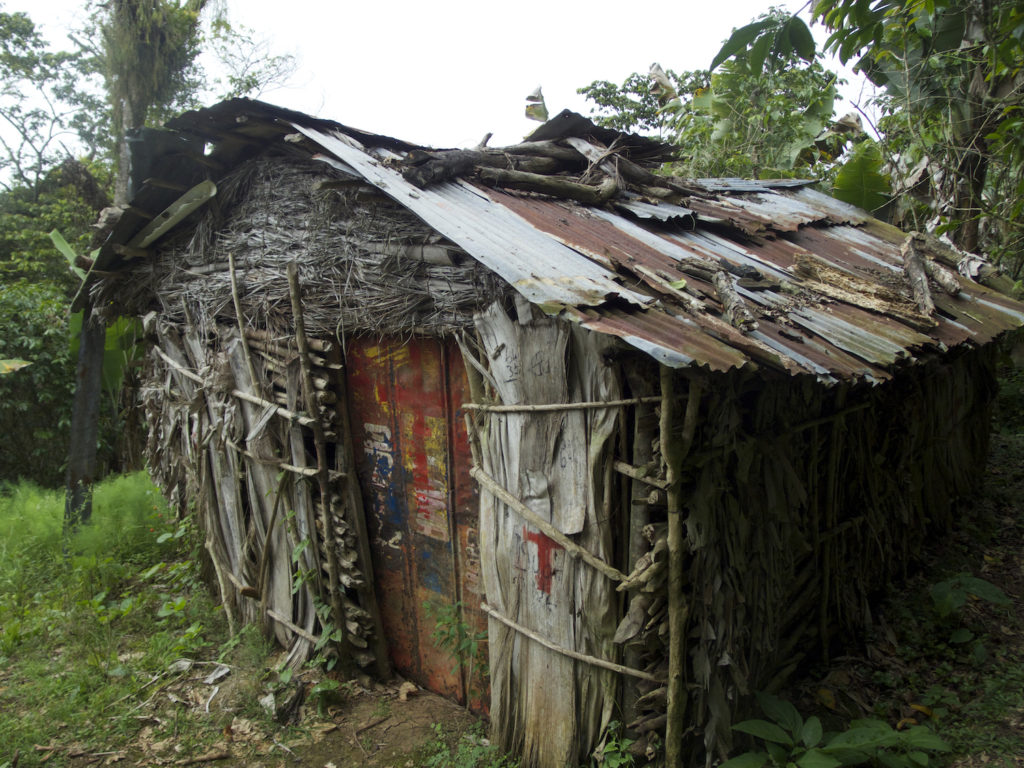
High in the steep, green mountains of central Hispaniola, near the long and porous border that divides the island where Columbus’ New World ventures began, and which is now shared by Haiti and the Dominican Republic, lies a hamlet called Las Petacas. Set amid mist-shrouded stands of coffee and maize, its dirt-floored shacks are far closer to the capital of Haiti—Port-au-Prince is less than 40 miles away—than to Santo Domingo. Along mountain trails here, one is as likely to hear workmen murmuring to each other in Haitian Kreyol as chatting in tuneful Caribeño Spanish. But as its Castilian name suggests, Las Petacas (“the humps”) lies on the border’s Dominican side. A few years ago, this place witnessed events that showed just how entwined—and perilous—relations have long been between these two nations.
In the dim pre-dawn of November 21, 2013, José Méndez and Luja Encarnación were set upon in their home by unknown assassins. The couple was in their 70s and subsisted as do most cafeteros here: by picking coffee beans and roasting them over a covered cook-fire in their yard, to sell to wholesalers in the nearby larger town of Neyba. They also raised chickens and pigs, and nine kids. “My parents were simple people,” said their daughter Dominga, when months later I found her living nearby. “They had nothing.” This didn’t stop Méndez and Encarnación’s killers, apparently convinced these grandparents had some extra beans worth taking, from stealing into their shack with machetes and sticks. When their daughter came to call on the pair later that morning, Dominga spotted her mother’s body first: the woman was lying face down, sprawled on her threshold. Her common-law husband was a few feet away. His own bloodied body, at the edge of the forest into which he’d perhaps tried to flee, was missing its head. Dominga’s screams were heard by neighbors a half-mile away.
A few years ago, this place witnessed events that showed just how entwined—and perilous—relations have long been between these two nations.
“We knew who did it,” one of those neighbors later told me. “Haitians.” Within a few hours of the couple’s deaths, thirty or so neighbors and kin sought vengeance. This “multitude,” as Dominican newspapers called the lynch mob, didn’t have to go far. By early afternoon, a Haitian national named Andre Pierre but known as “Coito Pie”—he’d lived in Las Petacas for years—was dead. Two hundred and forty-four other Haitians, fearing for their lives, turned up at a Dominican military base in Neyba, seeking protection. According to Haitian human rights groups, many hundreds more fled the Dominican Republic along the same hidden trails they’d used to enter a country whose leaders speak of “securing the border” but whose farms and foremen have long depended on their labor. Some were seasonal migrants who would have made this return trip when the coffee harvest was done. Others had never crossed the border over which they were forced to flee by the mob.
In a poor country where justice can be as much a matter of communal action as judicial writ, these events were in some ways unremarkable: there’s no urban bidonville or rural colonia, on either half of Hispaniola, where one can’t hear tales of rogues or pederasts “dealt with” by extrajudicial parties. But what drew my attention to this episode in Las Petacas—and what made international news organizations pick up the story—was its timing.
A few weeks earlier, on September 23, 2013, the Dominican Republic’s highest court issued a ruling that made headlines worldwide: thenceforth, according to Sentencia 168-13 of the Tribunal Constitucional, the full rights and responsibilities of Dominican citizenship would be extended only to people who could prove that every one of their forebears, reaching back to 1929 (the date of an obscure change in the country’s constitutional law), were Dominican nationals, too. Prompting reasoned fears that up to 250,000 people—most of them of Dominican-born Haitians, or “Haitians of Dominican descent”—would be rendered stateless, the sentencia also placed the Dominican government in violation of several international treaties to which it is a signatory (including the Universal Declaration of Human Rights, which names “the right to a nationality” as one of its precepts). For the many parties that decried the ruling, from neighboring governments to non-governmental organizations, the sentencia’s potentially more immediate effects—whether in the form of mass deportations or a violent climate—were even more worrying. And now, from the border province of Neyba, came reports that everyone feared: murder, mob violence, and state collusion. When those 244 fearful people turned up at the Neyba military base, its soldiers had neither checked work permits nor sought to secure their safety in situ, but rather loaded them onto trucks (without belongings and unable to notify kin), driving them to the nearest official border crossing and summarily expelling them from the country.
According to Haitian human rights groups, many hundreds more fled the Dominican Republic along the same hidden trails they’d used to enter a country whose leaders speak of “securing the border.”
Soon after these events, some of the more extreme reports on the internet—one claimed that some 35 more Haitian nationals had been killed as they fled—were based more on rumor than fact. But the readiness of Haitians, especially, to believe such tales (some I spoke with months later still did) underscored the climate of fear and the power of the past’s ghosts along a mutable border whose modern lines were fixed only in the 1930s. That’s when the longtime Dominican dictator Rafael Trujillo, as Junot Díaz wrote in his enduring novel The Brief Wondrous Life of Oscar Wao, “inflicted a true border on the two countries, a border that exists beyond maps, a border that is carved directly into the histories and imaginations of a people.” The historical moment to which that line refers is the dark season of Trujillo’s perejil massacre—a spate of violence launched in response to reports of cattle thieving (“To the Dominicans who were complaining of the depredations by Haitians living among them, I have responded, ‘I will fix this,’” Trujillo said) but in fact undertaken to bolster a dictator’s power using that most à la mode tactic in 1937: xenophobic race war. Asking their Haitian neighbors to pronounce the word perejil (parsley), machete-wielding soldiers and civilians embraced the leader’s bidding: if their neighbors’ replies betrayed a French or Kreyol accent, their fate was death. No one knows exactly how many were killed—estimates range from 5,000 to 25,000 people. But by the time the killing stopped, the waters of an aptly named stream that forms part of the border here—the Massacre River—ran red with the blood of Haitians’ bodies dumped from its banks.
This episode, in a border region said to be populated by boogie men and zombies, birthed perhaps more ghosts than any other. Yet it also comprises but one modern chapter in a history of violence that reaches back to these nations’ founding, when the erstwhile Spanish colony of Santo Domingo won its independence not from Spain but from the black leaders of Haiti. After expelling their French masters from Hispaniola’s west, during their heroic revolution of 1791–1804, those leaders leveraged Madrid’s weak hold on the island’s eastern half to take over Santo Domingo, too. Which is why, when the Spanish creoles who lived there moved to win self-rule, they did so by waging war against their neighbors at battles like the 1844 clash in Neyba—the year of the DR’s founding—now recalled as the “baptism of blood.” Never mind that many members of this new polity were as dark-skinned as any Haitian (or that the vast majority of modern Dominicans possess African blood): the Dominican Republic was forged in antagonized opposition to the black nation next door. This history’s lasting effects, and those effects’ current expression, have brought me to Hispaniola time and again to see how the sentencia of 2013 has played out on the ground.
. . .
As one might expect, one place where the effects of the sentencia have been keenly felt, is along the border that cuts across Hispaniola’s rugged waist for 240-odd miles. For long stretches, the border is marked by nothing more forbidding than a series of little granite pyramids—some up to a mile apart—wedged into the dirt by US Marines along a route they arbitrated after occupying Haiti and the DR in the 1910s and ’20s. Across the frontier’s remoter passes, neither country has ever sought to regulate the movement of individuals or smugglers in ways much more aggressive than having lonely Dominican soldiers stationed here. Roving the area singly or in groups, their tradition when encountering passing Haitians isn’t to turn them around; it’s to demand a bribe or other favors before waving them on.
Such practices have also been common at the four official crossings—sites where paved roads bear trucks toting racks of rebar or concrete between the two countries and whose fences and checkpoints are manned on both sides by uniformed officers and inspectors. But in places like Jimani, DR, just across the border from Malpasse, Haiti—and only roughly twenty miles from Port-au-Prince—the gate between the two countries has been closed periodically. Whether affected by Dominican authorities wishing to forestall the spread of civil unrest into their country, or by Haitian leaders who’ve banned certain imports from the DR as retaliation for its treatment of Haitian people, such episodes have fed an air of state-sponsored chaos.
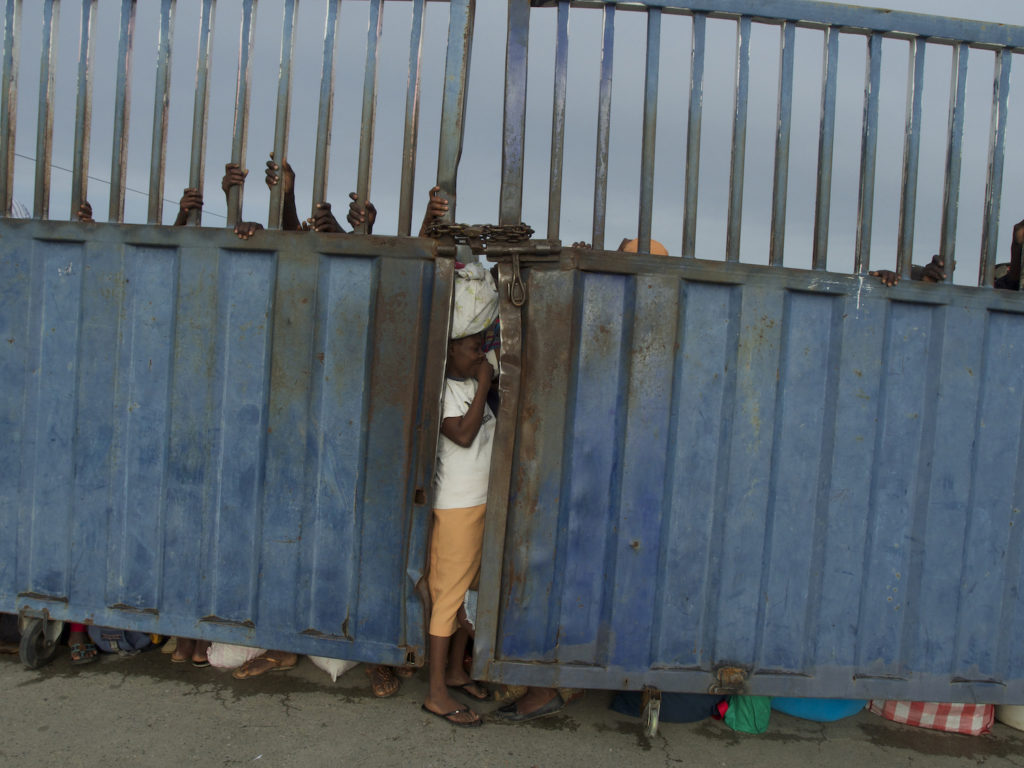
In the remote southern crossing that links the Dominican town of Pedernales to Anse-a-Pitre, in Haiti, most commerce is conducted by Madam Saras. These Haitian women, named for chattering Sara birds that are famed for their resourcefulness, have long been essential cogs in the economy of a country where 85 percent of trade happens in the “informal sector.” Responsible for bringing produce from Haiti’s farms to its cities, Madam Saras also act as wholesale import-exporters. Nowadays, many of them arrive at the Dominican border with bales of second-hand clothing—shirts and shoes and pants that reach Haiti with foreign aid groups, and which Haitians call pepe—to sell to merchants there. They return with packaged goods—cooking oil and spaghetti and hot dogs—that Haitians covet.
For long stretches, the border is marked by nothing more forbidding than a series of little granite pyramids—some up to a mile apart.
One moonlit night not long after the sentencia, I joined a dozen Madam Saras on a pebbly beach on Haiti’s southern coast to board a boat full of pepe, and at least a couple of oinking pigs, that deposited us by the border in Anse-a-Pitre some hours later. All of the Madam Saras complained about how the recent “tightening” of the line on the Dominican side brought an increase in the bribes they were required to pay to enter Pedernales. They also weren’t fans of the Haitian government’s recent ban on certain Dominican goods entering Haiti. A Madam Sara named Diamette spoke for them all when I asked her if she thought such policies could continue. “Of course not,” she said. “How will people get their beans?” She’s not alone among people on both sides of a line that, as much as it’s a monument to separation, also joins two economies that are nothing if not interdependent.
Nowhere is this dynamic more plain than at the northern crossing between Dajabon, DR, and Ouanaminthe, Haiti. The twin cities stare each other down across the muddy Massacre River and are joined by a steel and concrete span: the Friendship Bridge, whose hopeful name is belied by the rolls of razor wire, and soldiers with M-16s in Desert Storm-style fatigues who guard its Dominican side against people toting nothing more menacing, on the whole, than big bales of T-shirts. What distinguishes Dajabon is its International Market. A vast outdoor bazaar under a high steel roof, the market fills each Tuesday and Friday with thousands of Madam Saras and other Haitians allowed to enter Dajabon to sell goods—pepe, man-goes, knockoff whiskey distilled in Brazil or Bangalore—to Dominican bargain hunters.
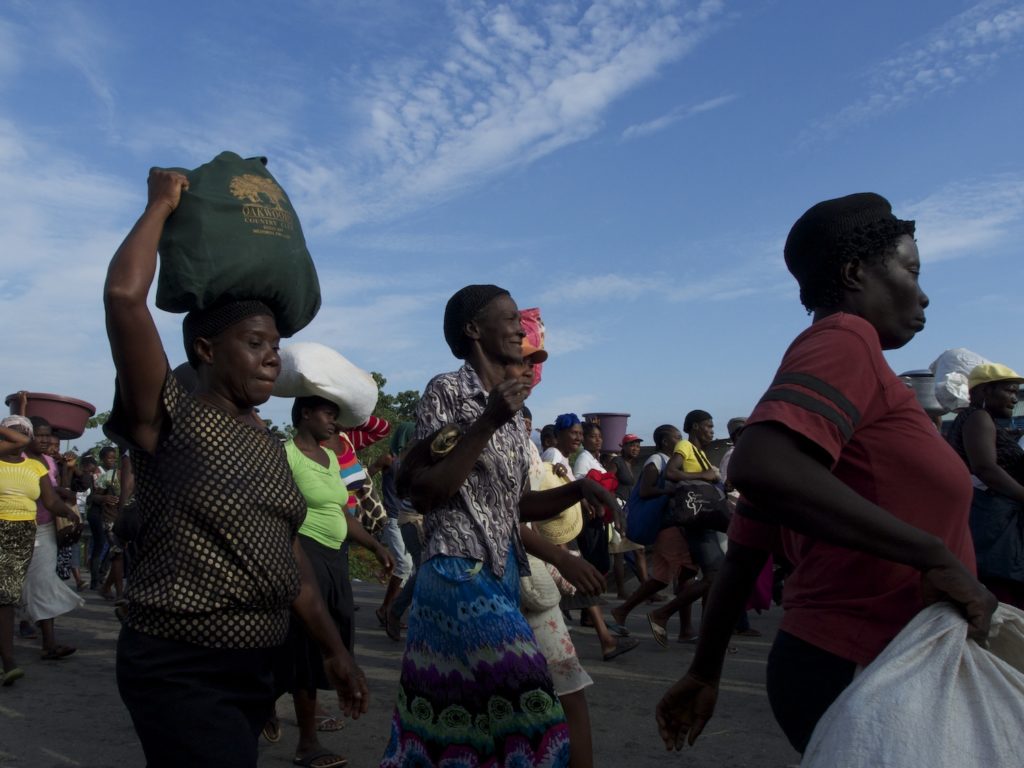
Twice a week, Haitians waiting to enter Dajabon begin lining up before dawn, on the Ouanaminthe side of the bridge and behind a heavy steel gate that the Dominican officers open shortly after 7 a.m. on market days. The flood of people thus released spring forth, with whoops and cries and carrying bales of clothing or towers of plastic buckets on their heads, to dash for the market’s choicest stalls. For the next ten hours, they sell their wares and haggle with enthused Dominicans. And then as the sun sets over the Massacre River, thousands of Haitians stride back home, carrying their wares or the packets of spaghetti or hot dogs they’ve secured in exchange and the Dominican soldiers, watching them pass, swing shut the big steel gate, topped with barbed wire, with a clang.
. . .
As political scientist Timothy Mitchell has written, such materials and scenes as one sees in Dajabon are the means by which an imaginary entity—the nation-state—makes itself real. But if the Haiti-DR border, like all borders, is as much an idea as a place—if it’s a concept, in Díaz’s terms, that “exists beyond maps”— then it’s also an active force in interactions and sites far from la linea itself. For what is it but the border, and the conception of difference it codifies, that one glimpses when, say, chatting with a police officer in the Dominican capital who carries on about “dangers posed by los negros”—even though his own complexion matches Michael Jordan’s; or when one hears from sugar workers in Dominican batey settlements where they’ve lived for generations, that that industry’s dependence on their toil has in no way assuaged their fear of being “returned” to a country whose language they don’t speak?
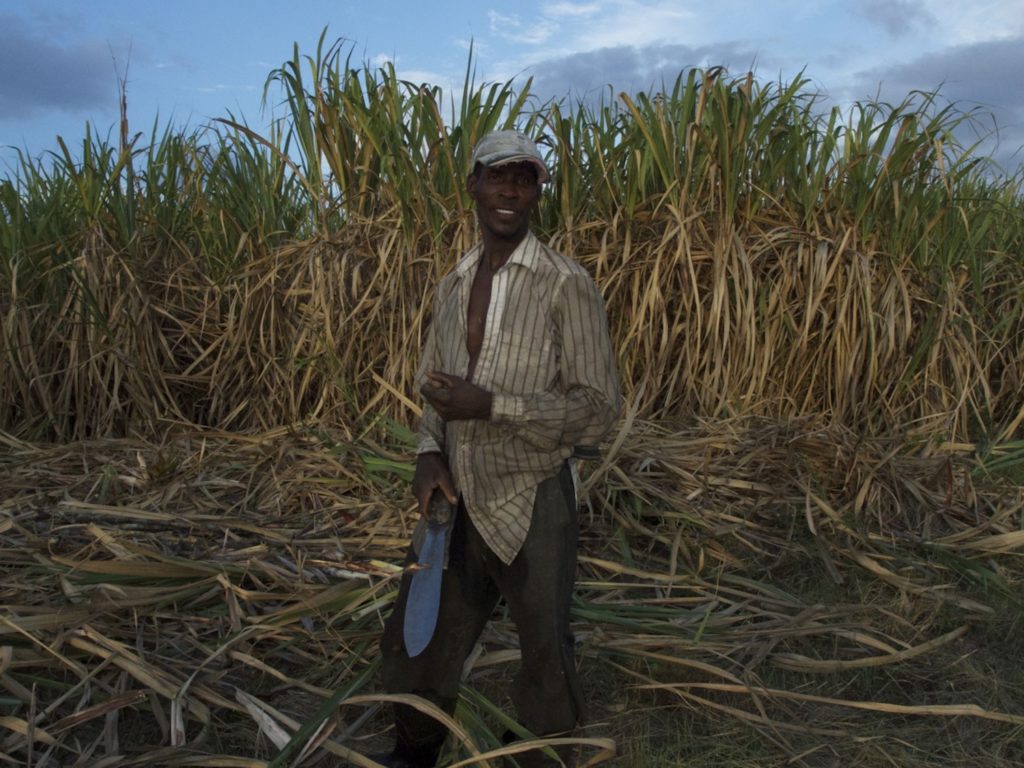
When the sentencia was passed, it prompted a flurry of concern from the United Nations, human rights groups and a world press corps that has since largely moved on. Overall, the law has resulted less in the mass deportations or genocidal violence which the press was looking for, than in the deepening of a climate of precarity and fear, abetted by subtler forms of mob rule in the countryside, for anyone in the DR of Haitian descent. With the Dominican government well aware that deporting all the people whose citizenship was imperiled by the law was both logistically and economically impossible, an anemic attempt to “regularize” the residency status of some of those threatened has occurred in recent years. More worryingly, at a time when xenophobes here and across the Americas have been emboldened by the wall-building rhetoric of Donald Trump, it’s been accompanied by a steady flow of “self-de- portations” by fearful Haitians. The belligerent language and violence directed toward people whose low-wage work keeps the Dominican economy afloat—but whose status as “other” has proved useful for politicians since the country’s founding— has clear parallels elsewhere. Yet few experiences of how that rhetoric can shape lives have stuck with me like what I found when, some months after first reading about the cafeteros murdered near Neyba, I set out from Santo Domingo to try to separate rumor from truth in those haunted woods.
Nowhere is this dynamic more plain than at the northern crossing between Dajabon, DR, and Ouanaminthe, Haiti.
Joined by photographer and documentarian Mirissa Neff, I drove our rental car west and we arrived, three hours outside the capital, in the dusty southwestern sugar town of Barahona. We paused by a seafront obelisk hailing the old Hollywood starlet Maria Montez, who grew up here and became the 1940s’ “Queen of Technicolor” by playing Ali Baba’s wife. We then continued past Barahona’s sugar fields and around the salty edge of Lago Enriquillo the big, crocodile-filled lake that guards these approaches to the Haitian border. Climbing a bluff at the base of the Sierra de Neiba, we arrived in the town, in the mountains’ shadow, that’s best known for hosting the battle that launched the DR’s old war for independence in 1844.
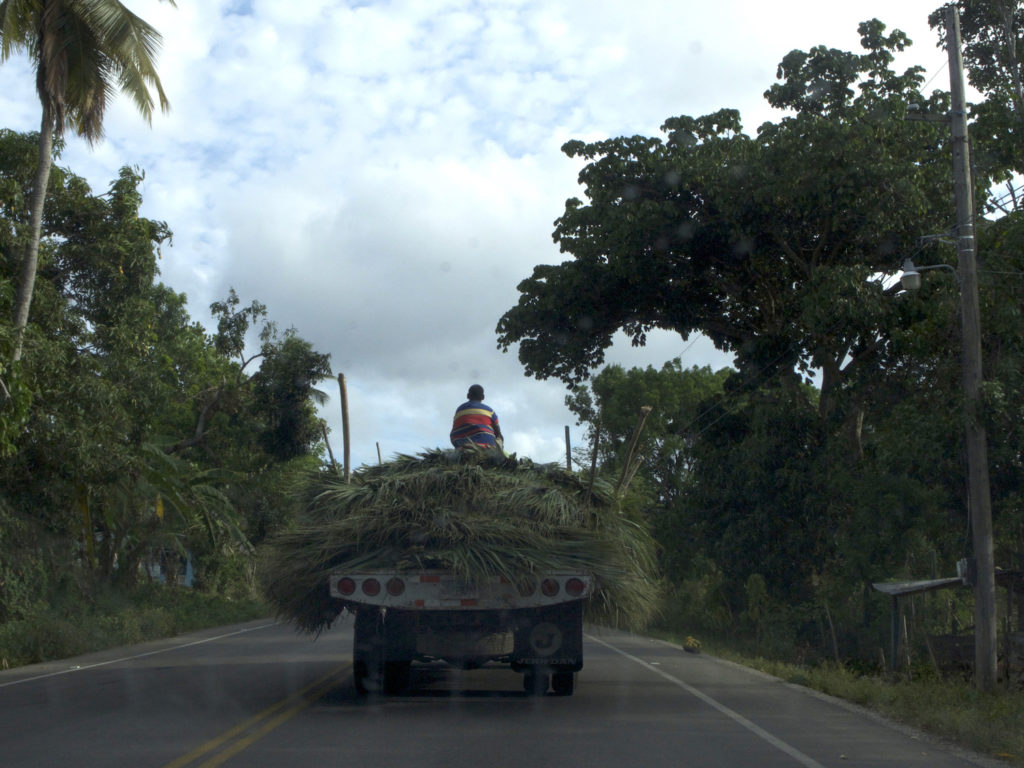
In Neyba’s town square, I asked a woman selling plastic jugs of local wine about the murdered cafeteros. She pointed us toward a sloping road, leading out of town, which after a few miles proved impassable in our little Kia. Soon enough, the affable man who became our Virgil rode toward us on one of the motorbikes that are the preferred mode of transport on rough roads here. Introducing himself as Olisimio, he looked to be in his 40s and wore ragged clothes and had a gap-toothed smile. When we asked about the killing of José Méndez and Luja Encarnación, he wasn’t shy to say with pride that he was a part of the mob that “dealt with” their deaths. He wasn’t sure about the rumors, from Haiti, that dozens of people had been slain near here in retribution for the crime. But he could confirm that on the afternoon it took place, a man named Coito Pie lay dead.
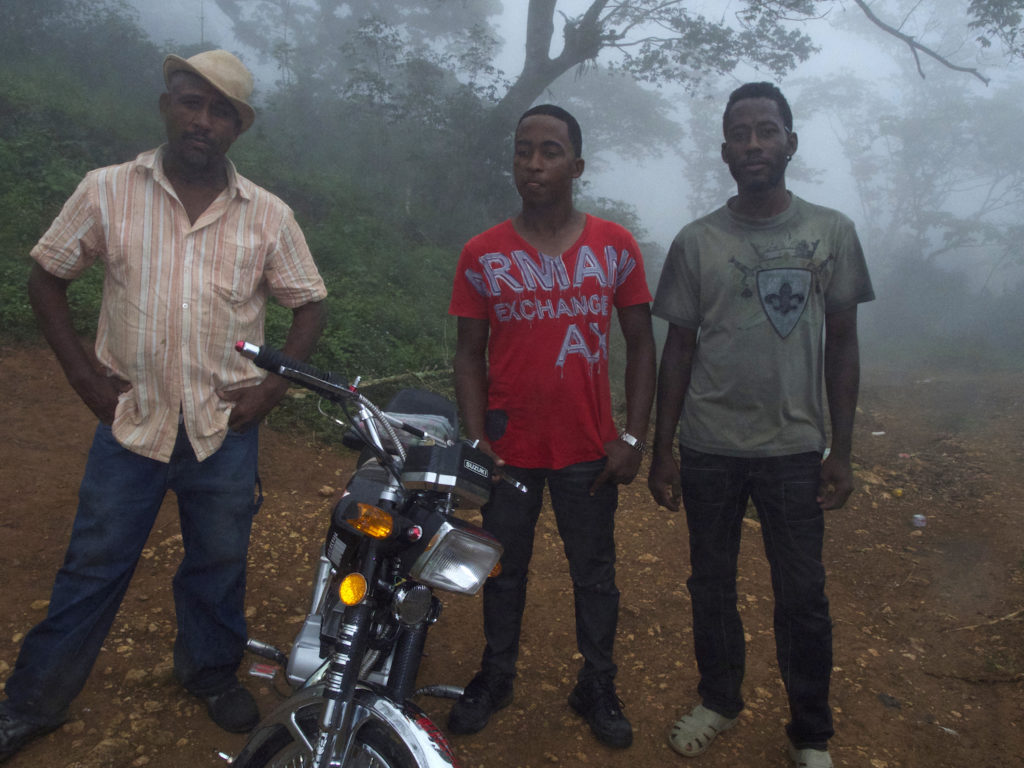
“Vamos,” Olisimio said. He moved forward on his bike, a machete at his waist. “I’ll show you.”
We held onto our vigilante guide, on the back of his moto, as he bumped upward into the mist and stopped by the home of the deceased’s daughter. Dominga Méndez, handing us coffee as her kids clutched her legs, wept as she recalled her parents’ kindness. We continued up the valley over which her screams had echoed, on the day she found them, to reach the clearing, in Las Petacas, where Olisimio affirmed that the multitude—he was careful not to name names—had ended Coito Pie’s life. We continued on foot, stashing his moto in the grass and leaving the dirt track to pass plantain trees and low pines common to higher Antillean elevations, to reach the first crime’s site: a square shack made from branches in a clearing whose overgrown grass bespoke the desertion since Dominga Méndez had arrived to find an awful scene. We continued into the bush. We found, a few hundred yards further on, another square shack that was identical to the first, except that this one, from its still-smoking cookfire out front, looked to be inhabited. Its door was covered by red and white markings that Olisimio attributed to cosas del Diablo—things of the Devil. They looked more to me like the bright colors and vevé drawings of Haitian vodou. They were less ominous, in any case, than the ratty sleeping bag of the lone Dominican “tiguere”—“a tiger,” or bad man—who was rumored to be living in the shack, Olisimio said, but who seemed to have ventured out to these border woods also said to be haunted by wolf spirits called loups garous.
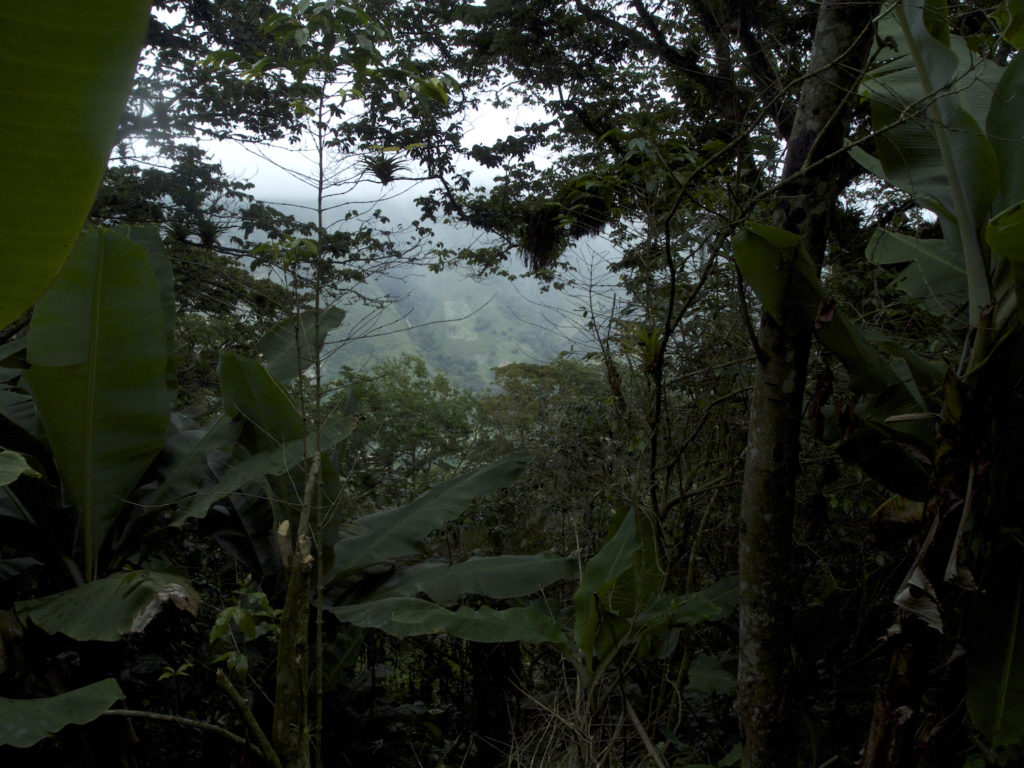
Before its current Dominican squatter, this had been the home of a Haitian man and his family whom Olisimio didn’t know but whom we were able to find on the border’s other side, later that year, with the help of a Haitian NGO who’d helped resettle refugees from Las Petacas. He was a pious fellow who introduced himself as Wilky Saincyrin but who couldn’t sign his name. He told me that he had lived a few plots from Méndez and Encarnación “since a cup of rice cost two pesos” (about five cents) and that they’d always gotten along; they’d shared coffee with him, sometimes, and he helped them with chores. Saincyrin’s eyes welled up when he recalled how his neighbors had died. But neither his longevity in the area nor his horror at what befell them, mattered when news of their demise, and of the multitude gathered in its wake, reached his family. They left their left their home and livelihoods—none of his kids had ever set foot in Haiti—at a few minutes’ notice.
Saincyrin’s travails appeared to be of little concern to Olisimio, our guide. Evidently, he was happier to have the shack occupied by a Dominican outlaw than an honest Haitian. “We used to have a problem with Haitians here,” he said as he pointed his bike downhill. “But now we don’t.” And then this poor but proud Caribbean man, who was clear in his ethics and his community’s, turned off his motor to conserve fuel. We bumped down past flamboyant blooms and toward where the “baptism of blood,” that nineteenth century battle that might as well have been yesterday, birthed the Dominican Republic.



